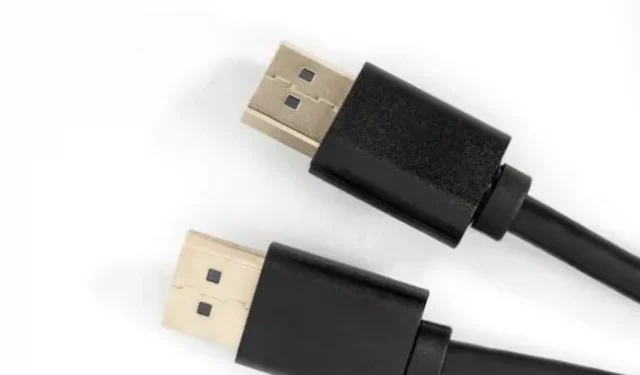Pixel and speed lovers have been looking forward to the release of DisplayPort 2.0 products ever since the Video Electronics Standards Association (VESA), which developed the specification, announced it in 2019. While the pandemic has hampered video protocol product testing and slowed its release, monitors, PCs, and other devices are getting closer to achieving DisplayPort 2.0 certification.
On Monday, VESA announced the certification of AMD Ryzen 6000 laptop processors to support DisplayPort 2.0 with one of the highest data rates, Ultra High Data Rate 10 (UHBR10), which provides data transfer rates of 10 Gb/s and a maximum throughput of 40 Gb/s. c for four ports. lanes.
VESA introduced DisplayPort 2.0 UHBR tags in February. Once DisplayPort 2.0 products become available, it will be easier to determine which products support the higher bandwidth of the backwards compatibility specification. The move comes after the HDMI Licensing Administrator, who draws up the HDMI specification, received backlash for not specifying which HDMI 2.1-certified products support maximum capabilities.
VESA has announced that the Ryzen 6000 mobile APUs are UHBR10 certified, but we are still waiting for the product to pass the DisplayPort 2.0, UHBR13.5, and UHBR20 maximum data rate test. With the latter supporting speeds up to 80 Gb/s, it will allow you to use resource-intensive applications such as 8K HDR video at 60 Hz or SDR video with higher resolutions.
VESA also announced that chipset makers MediaTek and RealTek have achieved UHBR certification by “successfully completing the PHY, link, and compatibility testing requirements outlined in the DisplayPort 2.0 Compliance Test Specification.”
This week, VESA is demonstrating DisplayPort 2.0 at the Information Display Society’s Display Week conference in San Jose, California. The demo features a Ryzen 6000-based reference PC connected to a DP40 certified cable, meaning it supports UHBR10 and speeds up to 40 Gbps, and a monitor using MediaTek certified chipsets. The demo, VESA told us, shows the spec supporting 4K resolution video running at an uncompressed 144Hz refresh rate. You can currently buy expensive 4K monitors aimed at gamers that can hit 144Hz, but they use compression to achieve that refresh rate.
DisplayPort 2.0 is great for advanced single or multi-monitor high resolution and/or high speed uncompressed configurations such as 4K HDR content at 240Hz or four 4K HDR monitors at 60Hz.
More Challenges
You still can’t buy a DisplayPort 2.0 monitor, graphics card, or PC (some cables are already available), but this week’s news shows significant progress in that direction.
VESA said its authorized DisplayPort test centers are ready to test and certify UHBR products. Other sources and display devices from VESA companies are undergoing a certification process, VESA noted.
In early 2021, VESA Display Representative Craig Wylie told Tom’s Hardware that VESA would be unable to host DisplayPort 2.0 test events in 2020, delaying debugging and development. Although at the time, the chief executive expected consumer products to be available in the second half of 2021. Because VESA does not make technical hardware, it was unable to confirm an exact release date for consumer DisplayPort 2.0 products. but the arrow is moving in the right direction.
Following VESA’s announcement of reference silicon validation, the group “now has a test infrastructure to evaluate and certify OEM end products”and is “ready to work with the ecosystem to bring next-generation DisplayPort and IP chipsets to market”- James Choate, Program Manager VESA compliance, the statement said.


